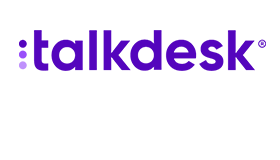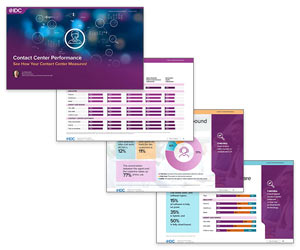Celia Cerdeira at Talkdesk explores what a virtual contact centre is, how one works, and why they have the power to benefit businesses across all industries.
As businesses grow and customer service demands increase, many companies are taking the leap from traditional on-site hardware to more scalable and resilient virtual contact centre solutions.
This shift isn’t just about technology, it’s about meeting evolving customer expectations while optimizing efficiency. These virtual solutions ensure operations can continue seamlessly, whether agents are working remotely or in a hybrid environment.
How Does Virtual Contact Centre Software Work?
A virtual contact centre eliminates physical boundaries. It’s a cloud-based platform that lets organizations manage and analyse customer interactions across multiple channels with agents working from anywhere in the world.
The software behind a virtual contact centre system is the hub of the customer service experience. It unifies phone, SMS, email, social media, and more into one interface, equipping agents with a stack of options to handle diverse inquiries.
These options include automatic call routing, analytics dashboards, and productivity management, working together to streamline the customer service process.
When customers connect, the system shifts into gear – analysing their questions, scanning their history, and matching them with the ideal agent in seconds. AI supports the process by reading emotional cues, handling routine questions automatically, and spotting potential problems before they happen.
This technology transforms customer service into a more responsive, efficient, and adaptable operation that meets customers wherever they are.
Traditional vs. Virtual Contact Centre: What’s The Difference?
Virtual contact centres stand apart from traditional models in both their technology and operational approach. For instance:
- Location – Traditional contact centres operate from a physical office, whereas a virtual contact centre enables remote working from anywhere with an internet connection.
- Team management – Traditional centres allow for in-person monitoring and training, whereas virtual teams rely on cloud-based tools and digital communication.
- Scalability – Virtual contact centres can be rapidly scaled up or down without physical constraints. Traditional centres are limited by infrastructure and flexibility.
- Costs – Traditional contact centres require significant investment in infrastructure and equipment. Virtual contact centres reduce overhead through remote working and cloud-based tools.
Traditional call centres can support omnichannel customer experiences, but they often run into limitations compared to their virtual counterparts.
Physical infrastructure tends to be more rigid – systems might be siloed, channels aren’t always well integrated, and scaling to support new platforms or customer touchpoints can be slow and costly.
Virtual contact centres, on the other hand, are built for flexibility. Since they operate in the cloud, they’re not tied to one location or set of tools.
It’s easier to unify different communication channels into a single, streamlined system. Agents can move between channels without losing context, and customers get a smoother, more consistent experience no matter how they reach out.
Virtual centres also leverage artificial intelligence to improve customer experience. AI-powered tools like chatbots, sentiment analysis, and predictive routing help streamline operations and personalize interactions regardless of the contact centre’s physical structure.
Let’s take a closer look at the technology that powers virtual contact centres and how it’s revolutionizing customer service delivery.
What Technology Does a Virtual Contact Centre Use?
Virtual contact centres leverage new technologies to deliver a modern customer service experience. Here are the key technologies powering today’s solutions.
AI-Powered Virtual Agents Answer Customer Questions and Resolve Issues
Agentic AI transforms virtual agents from basic chatbots into sophisticated digital problem-solvers that handle complex customer issues independently.
They navigate conversations naturally, find solutions faster, and deliver personalized experiences that feel remarkably human – all without human intervention.
Innovative self-service options let customers solve problems on their own terms, with virtual assistants guiding them through common tasks and questions.
By analysing customer intent and sentiment, virtual assistants can direct customers to a human agent if needed. When human agents do step in, they’re supported by AI copilot tools that transcribe conversations in real time and surface the right knowledge to resolve complex issues on the spot.
Real-Time Dashboards Provide Immediate Insight Into CX Analytics
Measuring customer experience (CX) in a contact centre is crucial for ongoing improvement and success. Effective CX measurement helps organizations identify pain points, streamline processes, and boost customer satisfaction.
Customer experience analytics software delivers powerful capabilities to companies, including:
- Real-time visibility into contact centre operations that can be turned into actionable insights.
- Customizable metrics that align with specific business goals and KPIs.
- Trend identification that spotlights recurring problems, workflow inefficiencies, and common pain points.
- Agent performance insights that highlight coaching opportunities, knowledge gaps, and best practices.
- Contact centre dashboards visualize live staffing levels, busy periods, and suggest opportunities for improvement.
Productivity Management Tools Improve Every Agent’s Performance
Workforce engagement management (WEM) software transforms agents into star performers. These platforms elevate agent potential through greater scheduling flexibility, better feedback, and more personalized coaching.
In a virtual setting, WEMs empower department management with the data needed to balance customer demand and agent workload. More specifically, WEMs can:
- Forecast contact volumes with precision, eliminating guesswork and ensuring organizations are staffed to meet demand.
- Optimize scheduling across any time zone, balancing workloads and preventing both understaffing and agent burnout.
- Deliver actionable performance insights that spotlight exactly where improvements will have the biggest impact.
- Target coaching opportunities instantly, turning performance gaps into growth that elevates service quality.
Every agent, regardless of location, receives the exact support they need to deliver exceptional service every time.
Biometric Authentication Protects Customer Data
Modern virtual contact centres have ditched clunky passwords for biometric security. Voice patterns, fingerprints, and facial recognition verify customers instantly, creating a fortress around sensitive data while making interactions smoother and faster.
This invisible layer of compliance safeguards both customers and businesses without adding unnecessary friction.
What Are the Benefits of a Virtual Contact Centre?
Virtual contact centres offer major advantages that traditional models simply can’t match. Consider these key benefits of virtual contact centres:
Easy, Low-Risk Deployment Allows for Easy Operations
Launching a virtual contact centre no longer demands heavy upfront investments or long lead times. Unlike traditional setups that rely on rows of desks, phones, and fixed infrastructure, cloud-based contact centres eliminate physical constraints, making deployment faster and leaner.
This model offers organizations the freedom to scale at their own pace, rolling out capabilities in phases to match evolving business needs.
Whether expanding across geographies or testing new customer service channels, flexibility is built in from the start.
It also empowers teams to hit the ground running. Without clunky systems or complex training programs, agents can get started faster. Intuitive interfaces minimize setup time and reduce friction in day-to-day workflows.
Tools with a unified, customizable interface streamlines everything agents need into one place. No toggling between tabs.
No hunting for tools. Just a seamless, user-friendly environment designed to boost speed, reduce errors, and keep teams focused.
Virtual Contact Centre Agents Elevate the Customer Experience
Virtual contact centres break geographic barriers, connecting customers with skilled agents regardless of location. Virtual staffing enables extended hours and multilingual support options that traditional centres can’t practically provide.
As agents work across time zones, organizations can provide round-the-clock assistance and a truly accessible customer experience.
Virtual Contact Centre Technology Creates a Future-Proof Customer Service Model
When disaster strikes – power outages, building issues, or natural events – traditional contact centres shut down. Virtual operations simply reconnect from anywhere with internet access. Cloud infrastructure makes this change easy.
Virtual infrastructure like this also allows for scaling, updating, and implementing new features effortlessly, allowing organizations to adopt innovations instantly without the capital expenses that burden on-premises solutions.
Exploring the Challenges of Running a Virtual Contact Centre
While virtual contact centres offer clear benefits, they also come with challenges, including:
Hiring Remotely
The inability to meet in person can make it difficult to assess soft skills and cultural fit. Using video interviews, asking for referrals, and assessing previous work history can help qualify candidates.
Virtual Training and Onboarding
Training employees remotely requires additional structure and review processes to meet quality of service standards. Leverage WEMs for AI-powered training suggestions and implementation.
Monitoring Performance and Addressing Pain Points
Virtual contact centre software allows supervisors to monitor calls and address performance issues. This could include listening to recorded calls, analysing performance, and providing regular feedback.
Maintaining Company Culture
Creating an inspiring company culture can be difficult with a fragmented workforce, but it’s essential to create virtual spaces for casual interactions and team bonding.
Regular virtual events, recognition programs, and open communication channels can help. Agent experience tools assist management teams with bringing remote employees together in a shared platform with an emphasis on inter-team communication.
Data Security
Virtual contact centres must have robust security measures in place to protect sensitive customer data. This includes using secure software, training employees on cybersecurity best practices, and implementing a strict compliance and access control policy.
Technical Issues
As operations are heavily dependent on technology, any technical glitches can disrupt the service. Having a dedicated IT support team and a backup plan can help mitigate this risk.
Being aware of the potential obstacles before launching a virtual contact centre can better prepare an organization for long-term success.
Many leading virtual contact centre solutions include ready-made answers to these problems as standard, such as rich data analytics and training tools.
How Does a Virtual Contact Centre Improve Customer Experience?
A virtual contact centre removes the barriers that slow down and frustrate customer interactions. With real-time data, AI-driven insights, and omnichannel integration agents have everything they need at their fingertips.
Provide Consistent Service With Omnichannel Touchpoints
Today’s customers expect to move fluidly between channels – starting a conversation on live chat, following up by email, and maybe even finishing things over the phone.
A virtual contact centre makes that possible by tying all those touchpoints together into one cohesive experience.
Rather than treating each channel like a separate conversation, omnichannel support keeps the context. That means no more repeating account numbers or re-explaining issues. Conversations pick up right where they left off, no matter how or where the customer connects.
This level of continuity builds trust, reduces frustration, and demonstrates to customers that the brand is attentive at every step of the journey.
Monitor and Improve Agent Performance
Virtual contact centres do more than connect customers to agents; they empower teams to get better with every interaction.
With real-time performance monitoring and AI-powered analytics baked into the platform, managers gain instant visibility into how agents are doing across all channels.
Dashboards track response time, resolution rates, customer sentiment, and script adherence helping teams identify what’s working and where support might be falling short.
Instead of waiting for post-call reviews or monthly reports, supervisors can spot coaching opportunities in the moment and offer feedback when it counts most.
Even better, these platforms support personalized development plans, using data to tailor training and upskilling efforts for each agent. The result is a smarter, more responsive team that’s constantly improving and delivering better customer experiences.
Track the Most Important Contact Centre KPIs
Virtual contact centre platforms make it easier than ever to track the metrics that matter most. From customer satisfaction score (CSAT) and customer effort score (CES) to net promoter score (NPS), these KPIs offer a direct line into how customers perceive their interactions.
This doesn’t stop at numbers. Modern virtual contact centres also use advanced tools like sentiment analysis to pick up on emotional cues within conversations – tone, language, and pacing – giving teams a deeper understanding of customer experiences. These emotional insights can surface hidden friction points or highlight moments that drive delight.
With everything collected in a single, unified dashboard, teams get a clear view of performance trends and can respond quickly.
Help Customers Help Themselves
Today’s customers want fast answers – and often, they’d rather find those answers on their own. Virtual contact centres make that possible by integrating AI agents and agent assistants that are always on, ready to help 24/7.
These intelligent tools handle everything from simple FAQs to guiding users through troubleshooting steps or even processing payments and account updates. It’s self-service without the frustration – no hold times, no need to repeat information, and no dependence on business hours.
However, what really sets these systems apart is their ability to know when to escalate. When an issue goes beyond the bot’s capabilities, it smoothly hands things off to a live agent, along with the full conversation history and context.
That means customers don’t have to start over, and agents can jump in fully informed, ready to resolve the issue with empathy and precision.
How to Manage a Virtual Contact Centre
Contact centre management comes with its own unique challenges, from keeping agents productive to ensuring consistent performance. Without the structure of a physical workspace, effective management becomes even more critical.
Success depends on having the right tools, strategies, and support systems in place to keep teams aligned and customers satisfied.
Here are four key areas to help keep virtual contact centers running smoothly:
Implement an Effective Agent Onboarding Strategy
A strong onboarding process sets the tone for long-term agent success, especially in a virtual contact centre where in-person guidance is limited. A structured approach helps new hires feel confident, capable, and connected from day one.
Start with the basics: ensure tech setup and access are seamless, introduce key team members, and outline tools, workflows, and performance expectations.
In the first week, focus on job shadowing, product training, and hands-on practice with customer systems, paired with regular check-ins to track progress.
Thoughtful onboarding reduces turnover and shortens the ramp-up time which is key for maintaining high performance in a virtual setting.
Prioritize Internal Communication and Feedback
When teams operate virtually, communication becomes the glue holding everything together.
Start by standardizing the tools. Pick specific platforms for different types of communication, whether it’s email for formal updates, video calls for team check-ins, or messaging apps for quick day-to-day chats. Clear guidelines help everyone know where to go and what to expect.
Just as important is making feedback a two-way street. Performance reviews matter, but agents also need space to share what they’re seeing on the front lines. That includes flagging tech issues, gaps in training, or trends they’re noticing in customer conversations.
When agents feel heard, they become more engaged and invested in the contact center’s success, leading to better customer outcomes and reduced turnover.
Incentivize Agents to Deliver an Exceptional Customer Experience
Motivation drives performance, especially in virtual environments where traditional supervision methods may be less effective.
Consider implementing a mix of incentive strategies, such as performance-based financial bonuses tied to measurable metrics and recognition programs that highlight exceptional customer interactions.
Offer career advancement opportunities for consistent top performers, along with skill development initiatives that expand agent capabilities.
The most effective virtual contact centres celebrate both top performers and most-improved agents. This balanced approach recognizes excellence while encouraging growth across the entire team.
Creating a sense of friendly competition through gamification can further boost engagement – think leaderboards or team challenges that make performance improvement feel rewarding and fun.
This blog post has been re-published by kind permission of Talkdesk – View the Original Article
For more information about Talkdesk - visit the Talkdesk Website
Call Centre Helper is not responsible for the content of these guest blog posts. The opinions expressed in this article are those of the author, and do not necessarily reflect those of Call Centre Helper.
Author: Talkdesk
Reviewed by: Megan Jones
Published On: 3rd Jun 2025
Read more about - Guest Blogs, Celia Cerdeira, Talkdesk






 Talkdesk is a global customer experience leader for customer-obsessed companies. Our contact center solution provides a better way for businesses and customers to engage with one another.
Talkdesk is a global customer experience leader for customer-obsessed companies. Our contact center solution provides a better way for businesses and customers to engage with one another. 


































